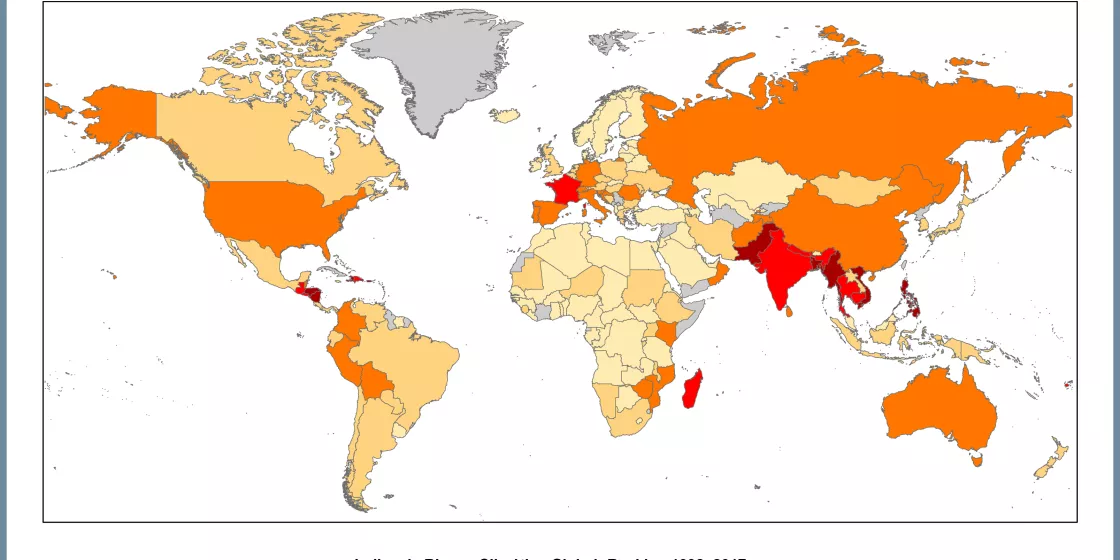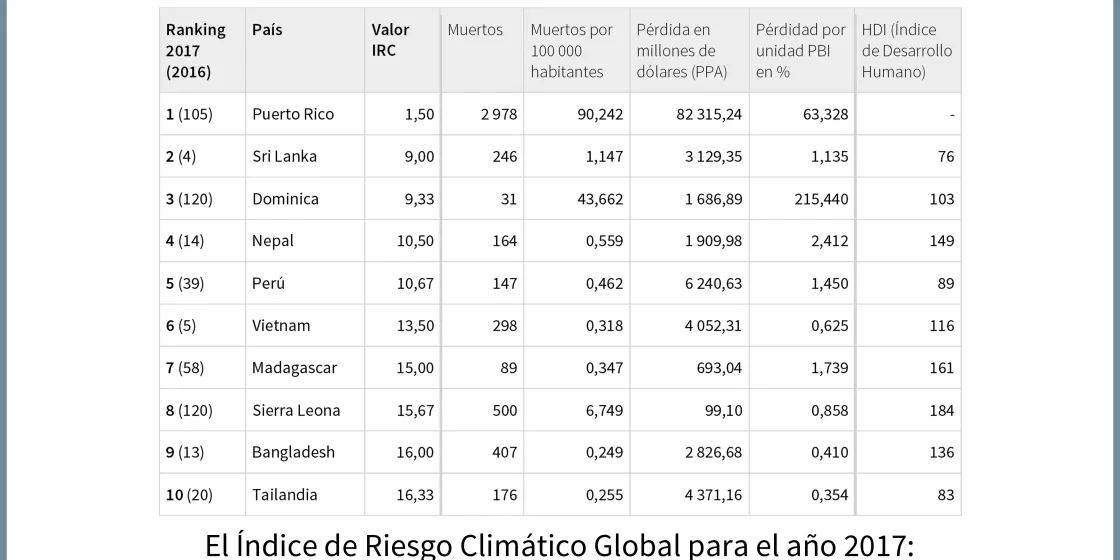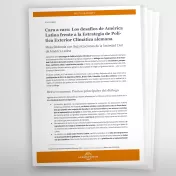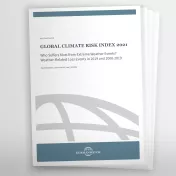
The Global Climate Risk Index 2019 analyses to what extent countries and regions have been affected by impacts of weather-related loss events (storms, floods, heat waves etc.). The most recent data available — for 2017 and from 1998 to 2017 — were taken into account.
The countries and territories affected most in 2017 were Puerto Rico, Sri Lanka as well as Dominica. For the period from 1998 to 2017 Puerto Rico, Honduras and Myanmar rank highest.
This year's 14th edition of the analysis reconfirms earlier results of the Climate Risk Index: less developed countries are generally more affected than industrialised countries. Regarding future climate change, the Climate Risk Index may serve as a red flag for already existing vulnerability that may further increase in regions where extreme events will become more frequent or more severe due to climate change. But the 2017 Atlantic hurricane season also proved: High income countries feel climate impacts more clearly than ever before. Effective climate change mitigation is therefore in the self-interest of all countries worldwide.
At this year’s Climate Summit in Katowice (COP24), countries should adopt the 'rulebook' needed for implementing the Paris Agreement, including the global adaptation goal and adaptation communication guidelines. Loss and damage appears as a cross-cutting issue with significant risk of being used as a negotiation chip.






